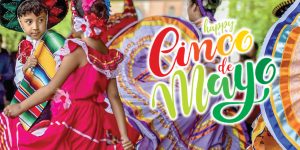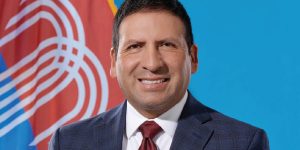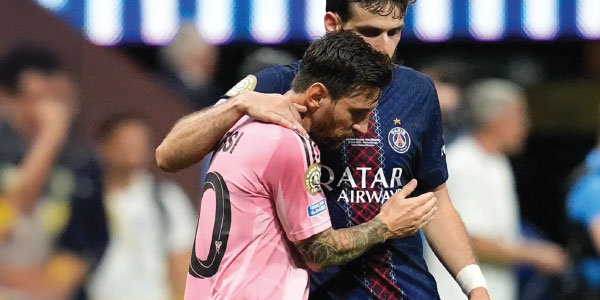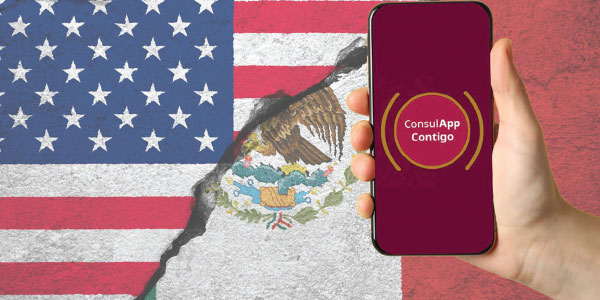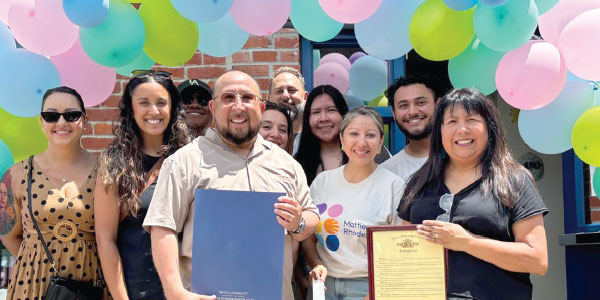
By Jorge Ramos
The blood was still on the ground. On the evening of Oct. 2, 1968, the administration of Mexican President Gustavo Díaz Ordaz orchestrated a massacre of student protesters in Mexico City’s Tlatelolco Square. Hundreds — we will never know exactly how many — were gunned down by the army and the police.
That night, Elena Poniatowska, who had just given birth, was feeding her child at home, but couldn’t keep still after she heard what was happening. “Two female friends called me,” Elena recalled recently, at her home in Coyoacan, Mexico. “They said the situation at Tlatelolco was terrifying, that their elevator doors were shot up and there were tanks with policemen and soldiers all over the place, and the walls were covered with blood.” The next day at dawn, Elena went to a military camp, where some of the students had been taken after they were arrested. But she wasn’t allowed to enter.
She then walked to the square. “I arrived at Tlatelolco. I saw women’s shoes, men’s shoes strewn all over the ground,” she told me, “like a snapshot of how people had run away while trying to save their lives. There was blood on the stairways. The police were still there.”
At that moment she decided she needed to tell this story, which the government wanted buried. She needed to gather testimonies from witnesses, but many had already been thrown in jail. “I started visiting Lecumberri [Mexico City’s prison for men] on Sundays, under a different name, and I obtained testimonies thanks to a student there, who [later] died,” she said. “I also went to the women’s prison, which was very far away, near Iztapalapa, and I started to put the pieces together like a reporter, which is what I am.”
She recorded some of the testimonies and took notes for others. Sometimes lawyers told her about clients who had been arrested. “Many people went to my house to give me their accounts,” she explained. “It was like I was putting together a chorus, this huge plethora of voices. And the book, ‘La Noche de Tlatelolco’ [known in English as “Massacre in Mexico”], was the result.”
I asked Elena: Do you have the slightest doubt that President Díaz Ordaz ordered the killing of these young people?
“No,” she replied. “Díaz Ordaz was in Guadalajara, but he panicked because the Olympics were about to start [in Mexico City] a few days later. Mexico was the first Latin American country to host the Olympic Games; it was an honor for Mexico. He didn’t want the students to sabotage that.”
“La Noche de Tlatelolco” was published in 1971, at a time when Mexico was under an authoritarian regime and the press was strongly censored. I asked Elena if she put herself at risk by writing a book like this, which was sure to irk officials in the administration. “I didn’t think about the danger,” she said. “I didn’t think about the consequences it might have.”
I told her many people have called her style of journalism “combative” and “committed,” and have described Elena as someone who “takes sides.” “I have never been neutral,” she told me. “I speak from the gut. I’m sure I miss a lot of things, but I do everything from my gut.”
Fifty years after the Mexican government dealt this horrific blow to the student movement, there are still many things we don’t know. No truth and justice commission was ever launched, and the perpetrators of the massacre were never identified. But Elena bravely, and professionally, chronicled what actually took place in the summer and fall of 1968. Her book is so full of life that even today the testimonies and voices of those who were there inspire fresh outrage.
At 86, Elena has done her part with regard to history. When I spoke with her, thousands of books from her personal library were being packed into boxes to be shipped to a foundation that is taking her name. I asked if this was a moment of giving back for her. “Giving back, letting go, yes,” she said. “When I go, I want to go light.”
P.S. I’m not one to hold onto many possessions, but among the few things I treasure is a first edition of “La Noche de Tlatelolco,” tattered and full of notes I’ve scribbled on the pages. Elena Poniatowska, without knowing it, has been a mentor to me, and she remains one of the world’s greatest journalists. She autographed my book, and now I don’t need anything else.
You can watch my interview with Elena here: bit.ly/2OkuHkC.
Elena Poniatowska y la Matanza de 1968
Todavía no limpiaban la sangre. El 2 de octubre de 1968 el gobierno del presidente Gustavo Díaz Ordaz había realizado una horrorosa masacre en la plaza de Tlatelolco en la Ciudad de México. Cientos de estudiantes — nunca sabremos exactamente cuántos — habían sido asesinados por el ejército y agentes policiales. Elena Poniatowska acababa de tener a su hijo y estaba amamantando. Pero no se pudo quedar quieta.
“Me hablaron dos amigas”, me contó Elena recientemente en su casa de Coyoacán, “que la situación en Tlatelolco era espantosa, que estaban perforadas todas las puertas de los elevadores, que había tanques con policías, con soldados en todas partes, había sangre en las paredes”. En la madrugada del 3 de octubre se fue al Campo Militar 1 donde estaban algunos de los estudiantes detenidos. Pero no la dejaron entrar.
Entonces se fue a la plaza de las Tres Culturas. “Llegué a Tlatelolco. Vi zapatos de mujer, zapatos de hombre, tirados en el suelo. Era un espectáculo de gente que había huido, que había tratado de salvar su vida. Y todavía había sangre en las escaleras. Todavía estaba la policía”.
A partir de entonces se propuso rescatar la historia que el gobierno quería enterrar. Lo primero era escuchar a los testigos de la masacre. Pero muchos estaban detenidos. “Empecé a ir a [la cárcel] de Lecumberri los domingos, con un nombre falso, y ahí recogí los testimonios gracias a un estudiante que [luego] murió. Después también fui a la cárcel de mujeres, que está lejísimos, por allá en Iztapalapa. Y así empecé a reunir como reportera — como lo que soy — lo que decían”.
Algunos testimonios los grabó. Otros tomó notas. Y en ocasiones los abogados le llevaban las versiones de los jóvenes detenidos. “Mucha gente fue a mi casa a contarme lo que había sucedido”, me explicó. “Fui armando este coro, o este inmenso mosaico de voces. Y ese es el resultado del [libro] ‘La Noche de Tlatelolco’.
¿No te queda la menor duda que la orden de asesinar a estos jóvenes fue de Díaz Ordaz? le pregunté. “No”, me respondió. “Díaz Ordaz estaba en Guadalajara, pero le entró un pánico porque se iban a iniciar [en la ciudad de México] los Juegos Olímpicos unos días después. Era el primer país de América Latina escogido para las Olimpíadas. Era un enorme honor para México. Entonces él no quería que los estudiantes fueran a sabotear esto”.
“La Noche de Tlatelolco” se publicó en 1971. Era una época en que México no era una democracia y donde había una férrea censura de prensa. ¿Corriste peligro al hacerlo? “Yo no me doy cuenta del peligro”, me dijo, casi ingenua. “No pensaba qué consecuencias podía haber”.
Le dije que muchos habían definido su estilo de hacer periodismo como combatiente o comprometido. Tomando partido. Y le pedí que lo definiera. “Yo nunca he sido neutral”, me dijo. “Yo hablo a partir de mis emociones. Seguramente miles de cosas se me van. Pero todo lo hago por la emoción. … Yo creo que en el periodismo hay que hacerlo lo mejor posible”. Y Elena, sin duda, lo hizo.
Cincuenta años después del terrible golpe al movimiento estudiantil hay, todavía, muchas cosas que no sabemos. No se creó una comisión de la verdad y la justicia nunca llegó a los responsables de la masacre. Pero Elena, con valentía y oficio, rescató lo que verdaderamente ocurrió durante ese verano y otoño de 1968. Su libro está tan vivo que incluso hoy sus testimonios y voces nos llenan de indignación.
Elena, de 86 años, ya cumplió con la historia. Cuando hablé con ella, su casa estaba patas p’arriba. Ponían en cajas miles de libros de su biblioteca personal para llevárselos a la fundación que lleva su nombre. ¿Estás en la época de devolver? le pregunté. “De devolver, de dejar, pues sí”, me reconoció, “de irse ligerito”.
(Aquí pueden ver la entrevista: bit.ly/2OkuHkC.)



